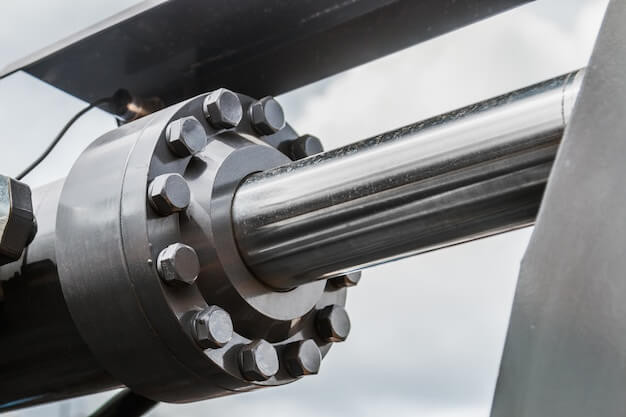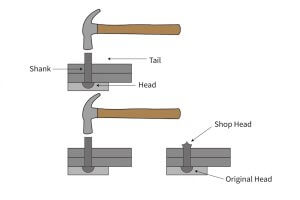Introduction to CNC Machining and Precision
CNC (Computer Numerical Control) machining stands at the forefront of modern manufacturing, utilizing computerized controls to operate complex machinery with remarkable accuracy. This process entails translating a digital design into numbered coordinates, which guide machine tools to cut and shape material with high precision. Precision is paramount in CNC operations, as it directly correlates with the quality and functionality of finished products. Manufacturers strive for exactness to meet stringent specifications, minimize waste, and ensure component interoperability within larger systems. For industries such as aerospace, automotive, and medical devices, where small deviations can have significant consequences, the emphasis on achieving tight tolerances highlights the importance of precision in every aspect of CNC machining.
Definition and Importance of Tool Compensation in CNC Machining
Tool compensation in CNC machining is a critical function that adjusts the position of cutting tools to account for variances in tool geometry, wear, and deflection. This ensures that the dimensions of the manufactured part remain accurate throughout the production process. Implementing tool wear compensation is particularly crucial due to the natural abrasion and reduction in size that tools experience over time, which can lead to deviations from specified tolerances if not corrected. By compensating for these factors, precision is maintained, enhancing the quality of the final product without interrupting the machining workflow for manual adjustments or tool replacement.
Types of Tool Compensation in CNC Machining
In the realm of CNC machining, tool compensation is essential for achieving precise dimensions and shapes. Length compensation deals with adjusting the toolpath to account for variations in tool length, ensuring that the cutting edge operates exactly where it’s intended. A typical example is when tools wear down over time; the machine automatically recalibrates to maintain accuracy. Diameter compensation, on the other hand, corrects for changes in a tool’s diameter due to wear or use of different-sized cutters, especially critical in milling operations that require tight tolerances. Lastly, geometric error compensation addresses errors arising from imperfections in the machine’s geometry such as misalignment or spindle runout, thus facilitating the production of parts with high precision by dynamically tweaking the toolpath.
The Role of Control Systems in Tool Compensation
CNC machines rely on robust control systems to maintain the high level of precision required for manufacturing complex parts. These control systems meticulously monitor and adjust the cutting tools’ position, taking into account any potential deviations caused by tool wear or thermal expansion. By using sensor feedback and predefined algorithms, the machine can dynamically compensate for these factors in real-time during the machining process. This symbiosis between machine calibration and compensation ensures that even over extended periods of use, the CNC equipment maintains accuracy without requiring manual intervention. An example of this would be a turning operation where the control system detects tool deflection due to cutting forces and automatically compensates by adjusting the tool path, ensuring the dimensions of the turned component remain within the specified tolerances.
Implementing Tool Compensation Strategies
In CNC machining, the implementation of tool compensation strategies is critical to counteract wear and ensure precision. This involves a methodical setup process where each tool’s specific offsets are determined by measuring its actual dimensions and inputting these values into the machine’s control system. Calibration procedures play an essential role in this context; they require systematic steps such as benchmarking tool lengths with precision blocks or probes and recording performance data over time to adjust for any deviations. An example of this might include using a pre-setter that accurately measures the tool outside of the machine and automatically sends the measurements to the CNC controller, thus minimizing errors caused by manual data entry.
Benefits of Tool Compensation in CNC Machining
The implementation of tool compensation in CNC machining brings forth substantial operational advantages. One of the primary benefits is the enhanced accuracy and consistency in manufactured parts. By automatically adjusting for variables such as tool wear and thermal effects, CNC machines can produce components with tighter tolerances and fewer discrepancies between each piece. This leads to higher quality products and increased customer satisfaction. Additionally, tool compensation contributes to prolonged tool life by mitigating premature wear, thereby reducing the frequency of tool replacements and machine downtime. This efficient use of resources not only saves cost but also maximizes production throughput, solidifying tool compensation as a critical feature for optimizing CNC machining processes.
Challenges in Achieaching Optimal Tool Compensation
In the realm of CNC machining, achieving precise tool compensation presents various challenges that can affect its effectiveness. Factors such as thermal expansion due to temperature fluctuations and material inconsistencies can introduce unwanted variances in finished parts. For instance, as a machine operates, heat is generated, potentially causing minute shifts in the geometry of metal components, which can alter tool positioning relative to the workpiece. Similarly, variations in material properties, like hardness or grain structure, may necessitate on-the-fly adjustments to avoid dimensional inaccuracies or tool wear. Managing these external influences requires robust monitoring systems and adaptive control techniques within the CNC framework to maintain the high precision demanded by modern manufacturing processes.
Effective Tool Compensation in Aerospace CNC Machining
In the aerospace industry, tool compensation techniques have been effectively implemented to enhance precision and efficiency during CNC machining. One notable example involves the manufacturing of aircraft turbine blades that require extraordinarily tight tolerances on complex surfaces. By applying precise tool offset adjustments based on real-time measurement feedback, a manufacturer could achieve surface finish improvements by over 30% while also reducing scrap rates significantly. This level of refinement not only bolstered component quality but also streamlined production workflow by diminishing the frequency of machine stoppages for manual calibration, demonstrating a clear case where strategic tool compensation directly correlates with operational enhancements.
Other Articles You Might Enjoy
- Elevating Precision Standards through Chamfer in CNC Machining
1. Introduction: The Pursuit of Unparalleled Precision In the realm of CNC machining, precision is paramount. This section introduces the article by exploring the significance of precision in manufacturing and…
- Precision Prowess: Unveiling the Advantages of China CNC Machining
1. Introduction: The Role of Precision in Manufacturing Excellence In this introductory section, we delve into the critical role that precision plays in manufacturing and set the stage for an…
- Revolutionizing CNC Machining for Complex Aerospace Assemblies
Introduction to CNC Machining in Aerospace Assemblies Computer Numerical Control (CNC) machining represents a significant technological development playing a notable role in the creation of complex aerospace assemblies. CNC machining…









